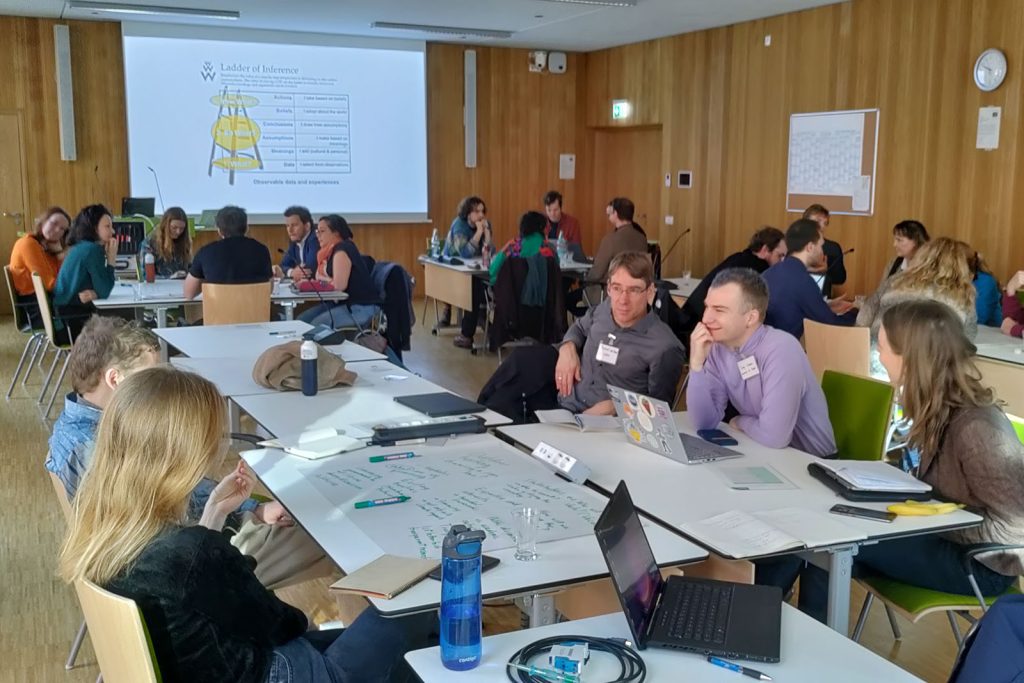Photo credit: Burgess Langshaw Power
By Burgess Langshaw Power, PhD in Global Governance
We have now crossed the threshold of 1.5 degrees centigrade warming, according to the European Union’s Copernicus Climate Change Service. This is catastrophic news for the world, as we seek to reduce emissions and manage an economic, social, and environmentally secure future. For Canada, this means we can expect a chaotic 2024, which will seem even more extreme as a result of the El Nino weather pattern which will hold through the early summer. While it is hard to predict specific effects, it is likely that the notable forest fires, floods, and heat waves experienced across Canada will continue to play a large role in Canadians’ everyday lives.
While this should be a wakeup call for the Canadian government, the Climate Action Tracker still rates Canada’s policy portfolio on the subject to be ‘highly insufficient’. While the Canadian Climate Institute remains optimistic about the future, the political party favoured to win the next federal election is against Canada’s ‘carbon tax’ – one of Canada’s only current and effective strategies to address the problem – and does not have any other platform of any kind concerning the issue of climate change.
This lack of policy direction and vision in Canada and internationally is not only becoming increasingly problematic, but it may lead to the consideration of extreme measures. Perhaps the most ‘extreme’ of these measures is a group of novel and emerging technologies and techniques known as ‘climate interventions’. These include conventional ideas like carbon capture and storage, where the carbon is captured directly from the atmosphere, also known as ‘direct air capture’ or ‘DAC’. More extreme is an emerging concept known as ‘solar geoengineering’ whereby the planet could be artificially cooled by decreasing the amount of light which arrives at the earths surface. It is especially important to note that no form of solar geoengineering is a climate solution. It does not remove carbon dioxide or any other warming agent from the atmosphere, and is only ever capable of buying time and reducing a limited set of effects caused by anthropogenic climate change.
While these technologies may have some potential in theory, there is no question that they all impose a serious set of risks depending on the specific technology or technique in question. On one level, they present a distraction from the urgent need for rapid emissions reduction, and on another they likely present some combination of economic, social, and environmental risks. To understand these risks, I have spent the last several days attending and presenting at a series of conferences: the Umweltbundesamt workshop on Solar Geoengineering (hosted by The Copernicus Institute and Umweltbundesamt, the environment agency of the German government), the Gordon Research Seminar on Uncertainties and Impacts of Solar Radiation Modification on Earth System Response, and Gordon Research Conference on Addressing Key Process and Impacts of Earth System Response to Solar Radiation Modification.
Here is what you need to know: First and foremost, there is a desperate need for a public engagement program, both in Canada and internationally, to discuss the ramifications of climate interventions, especially those such as solar geoengineering. Public knowledge about the risks – and possible benefits – is very low. The decision to deploy any technologies would have wide reaching implications for which citizens of both Canada and the world should be educated, informed, and involved in the decision-making processes. Second, while some proponents are ardently supporting the rapid deployment of these techniques, we simply do not have enough knowledge to understand the risks, effects, and efficacy of any measures. There is a strong possibility that these technologies could either cause more harm than good or be ineffective (either environmentally or economically). Finally, we must discuss the governance of these technologies as soon as possible. Failing to implement a robust technology governance regime could lead to a series of problems, including opening loopholes allowing for testing and deployment against the better judgement of democracies, the proliferation and an ‘arms race’ type scenario that could lead to various forms of geopolitical conflict, and the movement of crucial research from the public domain to private or covert operations that lack transparency and accountability.
To address some of the concerns raised by these technologies and techniques, the Waterloo Climate Intervention Strategies Lab (WatCISL) has been formed under the leadership of Dr. Neil Craik, Dr. Vanessa Schweitzer, Dr. Juan Moreno-Cruz, and Dr. Eric Croiset. This research group’s goal is to engage in interdisciplinary investigation of a wide range of geophysical, economic, and regulatory implications of climate interventions, with a focus on exploring climate intervention strategies in a Canadian policy context. Expect to hear more from the growing members of this research group and reach out if you would like more information on our research, or on opportunities to collaborate.
The opinions expressed in this article are those of the author(s) and do not necessarily reflect the views of the BSIA, its students, faculty, staff, or Board of Directors.
